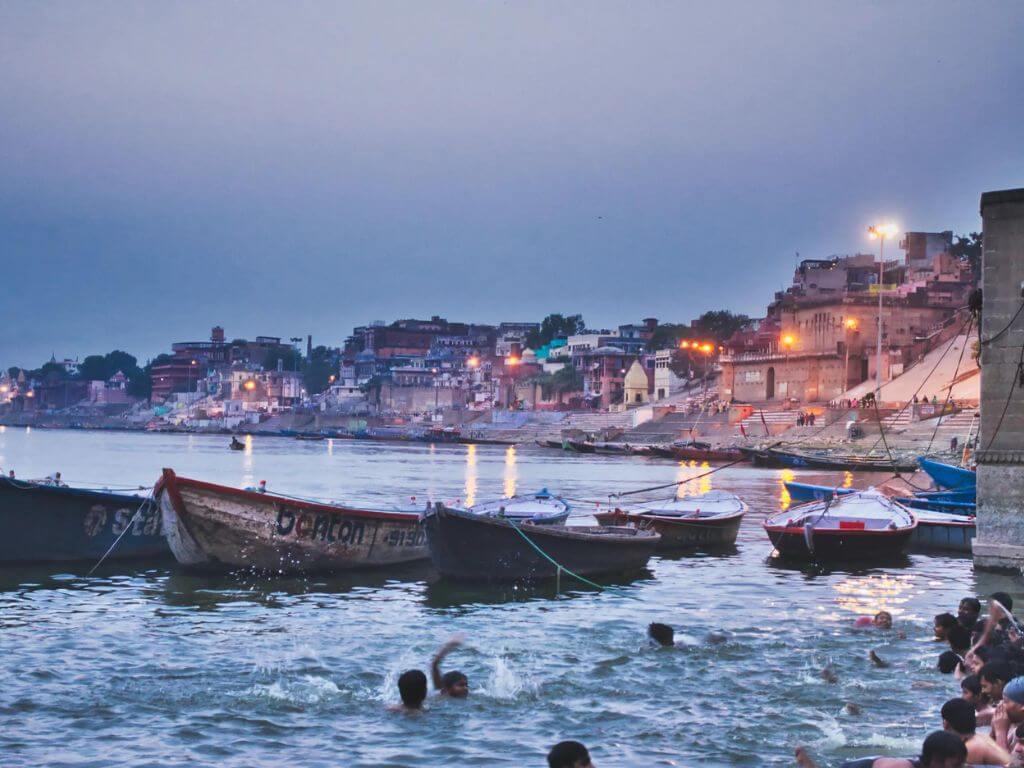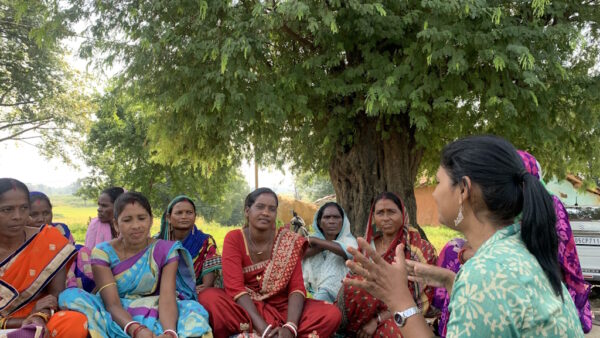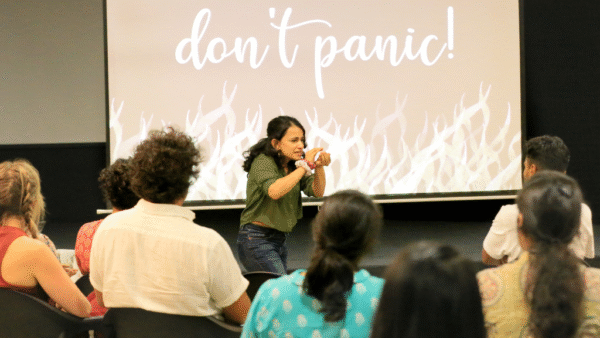Do we have space for rivers in our cities? This seems a question of an old- fashioned or romantic mind but it is a legitimate question as India’s massive and rapid urbanisation comes at the cost of its urban ecology, including rivers and waterbodies. Going by our lived experience, the rate at which the natural areas in cities – especially rivers and waterbodies – are exploited or ignored, the way in which planners and governments treat rivers and their various essential components in cities big or small, the answer has to be a clear ‘no’.
Rivers in India’s cities, or urban rivers if they can be so called, are not only in a poor state but their condition is worsening with every passing day[1]. Pollution, encroachments, solid waste dumping, damming, water diversions, over-exploitation of groundwater, degradation of catchment areas, destruction of water bodies, denudation of wetlands and forests, indiscriminate mining, the impact of massive construction such as bridges, flyovers and metros are the known physical threats to urban rivers.
A complete lack of legal or institutional protection of the rivers in cities accompanied by a mindset that sees rivers as non-essential and expendable entities are among the major causes for the sorry situation of the rivers. Urban planning or city plans do not adequately protect them; in fact, planning is limited to land use or land allocation and barely takes into account natural resources in a city. Urban rivers, more often than not, are reduced to sewage pipelines.
This is true of rivers Yamuna in Delhi, Agra, and Mathura, Ganga in Prayagraj, Varanasi, and Patna, Gomati in Lucknow, Mithi and other rivers in Mumbai, Mula-Mutha in Pune, Sabarmati in Ahmedabad, Dravyawati in Jaipur, Khan in Indore, Kshipra in Ujjain, Jhelum in Srinagar, Mahi and Vishvamitri in Vadodara, Tapi in Surat, Arkavathi and Virishabhavati in Bengaluru, Ennore in Chennai to name a few.
They are polluted and often unusable, turned into dumping grounds for the cities’ sewage and industrial effluents, and their riverine ecology is damaged by the year. The consequences of the worsening state of urban rivers are already being experienced in multiple ways including increasingly destructive floods, water scarcity even in cities with multiple rivers and waterbodies, worsening quality of life especially for the vulnerable, and increasing economic, social, and cultural impact. The rapidly rising urbanisation and rapidly increasing per capita footprint of urban India means that these consequences are set to worsen, at a time when Climate Change and extreme weather events, including floods, pose a major challenge for urban governance.
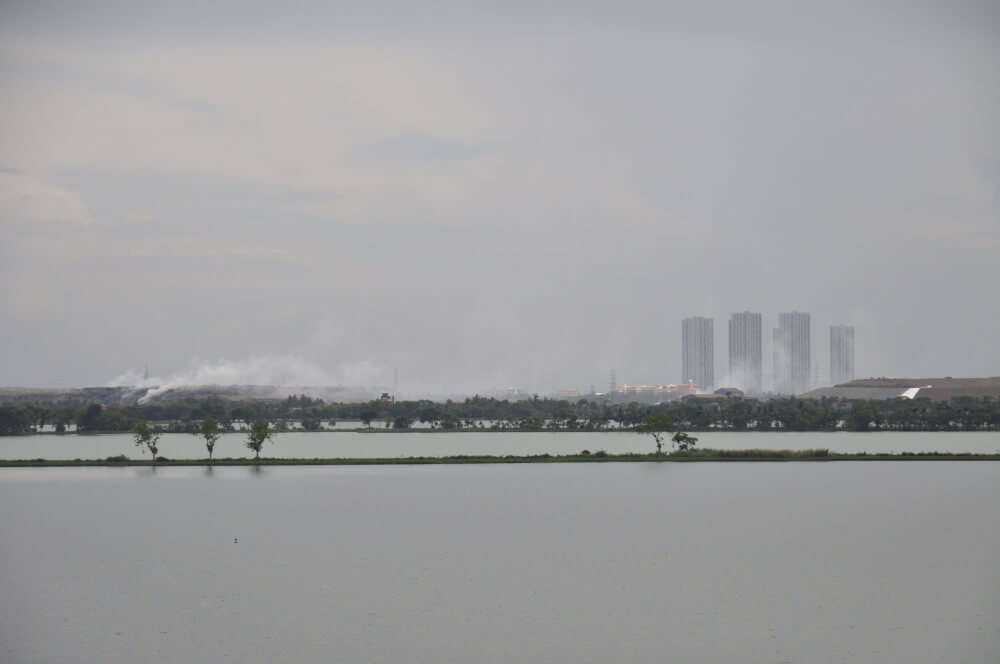
How Kolkata wetlands treats sewage
It is not that we do not know how to treat and take care of urban rivers. Nature provides us lessons – the East Kolkata Wetlands (EKW) has been a blessing for the Hooghly River. The threats that rivers in other cities face are also prevalent in Hooghly, and they are increasingly hostile for the wetlands too, but the latter provides a remarkable example of how the sewage of Kolkata gets treated at the wetlands before being discharged into the river. This is a natural function, treated without the use of land and capital-intensive Sewage Treatment Plants (STPs) which rarely function in a sustained way or are bypassed.
As Amitangshu Acharya noted[2] about the East Kolkata Wetlands, “In 1930, a local landlord and fish farm owner, Bhabanath Sen, began to let Calcutta’s wastewater into his fishponds. The success he witnessed with fish growth and productivity laid the foundation for a globally celebrated example of urban sustainability – the East Kolkata Wetlands. Today, a vast waterscape of 264 fishponds recycles 750 million litres of sewage and wastewater, and where 50,000 fisherfolk and vegetable farmers turn excrement into 10,000 tonnes of fish and 50,000 tonnes of vegetables.” This does not mean that all is well with the East Kolkata Wetlands; a struggle is going on in Kolkata to save the wetlands from urban onslaught as the city expands.
As sewage and effluents are directed to the rivers in a city, STPs have become the mainstay of cities[3] to treat its filth, but their functioning has been inconsistent. Not all the STPs function at optimum capacity, a few do and help to showcase that the sewage is “treated” before letting it out into the waters. Non-functioning STPs end up releasing untreated or semi-treated sewage into the rivers and water bodies of cities. Local governments have no clue about how to ensure that STPs – touted as the only solution – deliver the promised results; yet, more and bigger STPs are built. There is no attempt to make their functioning more transparent, accountable, or participatory. Decentralised STPs can help reduce cost, it is simpler to ensure that they remain functional, and they can recycle the treated sewage locally. However, governments do not appear to have any interest in them.
Riverfront “development”
The most celebrated example of how to treat – or not to treat – a city’s river lies in Ahmedabad’s Sabarmati riverfront project. It was made famous by Prime Minister Narendra Modi himself. He inaugurated it and later promised, on billboards put up by the Bharatiya Janata Party in Varanasi during the 2014 Lok Sabha election, that if elected he would convert the Ganga in Varanasi to a Sabarmati-like riverfront.
Fortunately, that has not come to pass yet though some components of the riverfront “development” plan were implemented. The Varanasi project has reportedly been scrapped[4] after it was completely destroyed by monsoon floods in August 2021. The Dravyavati Riverfront Project in Jaipur remains stalled for years[5] due to dispute between the government and the contractor.
At the heart of this idea lies the presumption that natural river and its ecosystems can be toyed with to create physical infrastructure – a riverfront – for economic or leisure pursuits. This goes under the garb of development when, in reality, such projects strip away the river of its natural ecology, change its geographical features, and leave a lasting damage on the marine life as well on people whose livelihoods depend on it.
At a meeting on urban rivers in Pune in April 2018[6], co-organised by South Asia Network on Dams, Rivers & People and INTACH, when I asked Bimal Patel, architect-planner of the Sabarmati Riverfront Development Project, what a river is in the context of the riverfront “development,” he had accused me of nursing “old-fashioned, romantic ideas” about rivers. However, people seem to treasure such ideas, and are opposing[7] the so-called innovative riverfront “development” projects around the country including in Delhi, Pune, Vadodara, Lucknow, Bhagalpur[8], and Kota to name a few. In Hyderabad, the Musi River Front Development Project remains scrapped[9] even after spending crores.
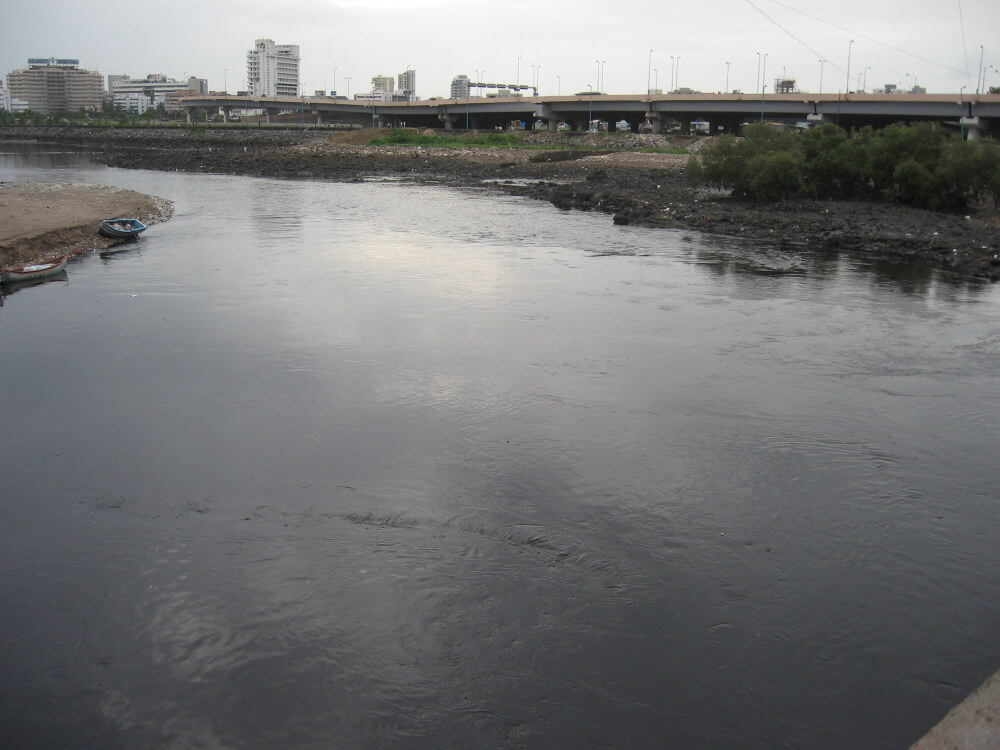
Photo: Nichalp/Creative Commons
How river science defines a river
Indeed, defining a river is key to answering the question about whether there is space for rivers in our cities. Briefly, a river is a hydrological drainage entity that is defined by the state of its climate, catchment, tributaries, upstream-downstream, lateral, vertical and temporal connectivities, and its floodplain. The aquatic and terrestrial biodiversity along the river, and the components of what flows in the river are other important components of a river.
It is not just water that flows in a river, but also silt, boulders, nutrients, and biodiversity. The biodiversity flow in a river is in fact not just upstream to downstream, but also downstream to upstream. Being a landscape level entity, the river also necessarily has ecological, social, cultural, and religious significance, it also provides a large number of economic services. The tributaries, the flood plains, the lakes and wetlands, the forests and ridge are very integral to a functional river.
There is nothing romantic about this definition of a river, it follows from the basic science of rivers which seems to escape or is wilfully ignored while planning and building cities. Planners and city governments have little interest in the science of rivers, architect-planners who helm riverfront “development” projects show little to no understanding of rivers, a city’s water governance system does not recognise the significance of rivers for their own sake.
The latter basically view the river, or the space occupied by it, in two ways – first as potential estate development, and second as a dumping ground for the city’s waste. Only when the city floods during heavy rain that they realise that the riverine land is fundamentally a natural drainage system. Yet, the link between devouring the river, narrowing it down or constructing on its banks for riverfront projects, and increasing floods in a city is rarely made by either officials and planners or people at large.
Taking or making land from the river, euphemistically called reclamation, is at the heart of the logic and economics of riverfront projects, even if such projects are sold to the people as environment improvement or river regeneration/rejuvenation efforts. This reclamation often happens without basic environmental or social impact assessments or genuine public consultation process. We saw all this happen in the Sabarmati riverfront project. What irritated Bimal Patel in that Pune meeting was the repeated, reasoned argument by many participants that Sabarmati is no longer a river but only a canal storing stagnant, non-flowing water that was brought from the Narmada River over which Ahmedabad had no right.
Such “development” does only one thing to the river: It kills the river. When such projects are politically backed and expanded across the country, the answer coming from the highest authorities tasked with protecting environment to the question of whether there is space in a city for rivers is: Sorry, there is none.
A policy vacuum
Just how significant rivers are to urban plans, even massive or grand ones, is evident in the union government’s Smart Cities Mission – there is no component in it related to rivers or the broader water sector. How can a city be “smart” without being river-smart or water-smart? But this question does not seem to have entered the minds of those in the government who put that Mission in place.
In fact, there is a total policy vacuum as far as the urban water sector or urban rivers are concerned. There is no policy to guide governments in water or river governance, there is no definition of what is a water-smart city, there are no stated objectives about urban rivers. The Pune meeting as well as the India Rivers Week meeting earlier ended with resolutions that India urgently needed a comprehensive urban water policy which would also define a river-smart city.
In November 2020, the National Mission for Clean Ganga (NMCG) introduced, in consultation with National Institute of Urban Affairs, a “Urban River Management Plan: Components and Guidance Note.” However, the note is neither a policy of the Government of India on urban rivers nor is it backed by any force of law. As it states: “The overall objective of this document is to assist cities along the Ganga River to improve the state of the river in their stretch. While the central focus is on the Ganga, the document also applies to other rivers flowing through these cities.”
The pathetic quality of this document is apparent when it states on page 17 that “The Ganga River Basin with an area of 1,080,000 sq km is one of the largest river basins in the world. It flows through the Indo-Gangetic plains of the country before merging in the Arabian Sea.” The Ganga does not merge into the Arabian Sea which is on the west coast of India; it flows eventually into the Bay of Bengal on the east coast. This is just one of many examples reflecting on the poor quality of this document which anyway is about the Ganga, not a comprehensive one for all urban rivers.
The NMCG brought out two more documents – “Strategic Guidelines for making river sensitive Master Plan” in June 2021 and “Guidance Note for Environmentally Sensitive, Climate Adaptive and Socially Inclusive Urban Riverfront Planning and Development” which was undated. They are a mouthful, more importantly they are guidelines only. India cannot not have a comprehensive urban river, or urban water, policy.
Several petitions have been filed with the National Green Tribunal (NGT) and in various high courts and the Supreme Court to protect urban rivers or challenge projects that threaten them. There have been some welcome orders[10], but cumulatively there has not been much positive change as many court orders – even if they protect urban rivers – remain unimplemented. In a few cases, the judiciary has not been able to fathom the significance of rivers or the urgency of the situation.
Urban rivers and Climate Change
The increasing frequency, intensity, and spread of the floods in cities is one of the many impacts of Climate Change on urban rivers. The need to protect and rejuvenate urban rivers in all their manifestations becomes even more important in the context of Climate Change and with the intensification of the water cycle. While our cities are fast losing rainwater holding, storing and recharging capacity, the global movement in a number of cities is in the opposite direction, with spreading concepts of room for the rivers[11] and sponge cities[12].
In a largely gloomy situation, there are hopeful signs[13] too but done by people – A Million Wells Initiative and Paani Earth in Bengaluru, Sarang Yadvadkar and Jivit Nadi group’ efforts on Pune’s rivers, the Yamuna Jiye Abhiyaan in Delhi, citizens’ groups cleaning rivers such as Netravathi in coastal Karnataka, Tawi in Jammu, and Cooum river in Tiruvallur in Tamil Nadu, people documenting the state of urban rivers such as Adyar River in Chennai and Hooghly’s heritage in Kolkata.
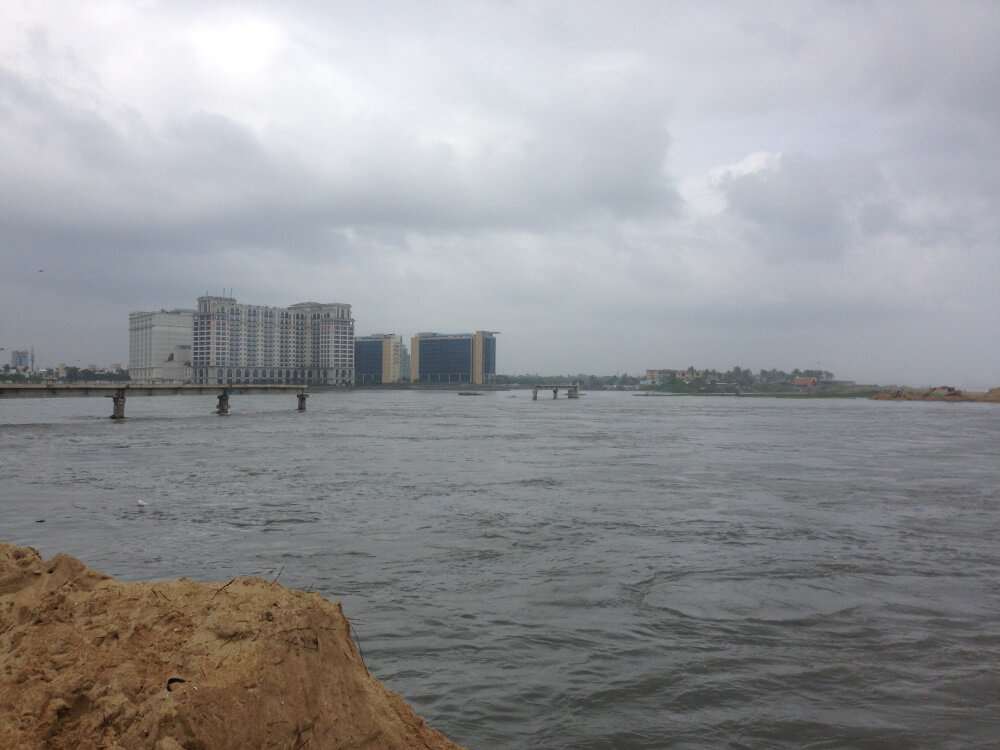
Photo: Creative Commons
Suggestions to improve urban rivers
The Union and state governments must come out with a national and state urban water policy which will also provide for urban rivers. No activities should be permitted, by law, in the 1-in-25 year floodplains and restricted activities with no construction permitted in the 1-in-100 year floodplains. The policy should also provide measures to protect the groundwater recharge zones and improve the capacity of the cities to hold, store, recharge the rainwater. All existing water bodies and wetlands should be protected and improved through desilting and other measures. Similarly, the city’s drainage system must be clearly defined and provided legal protection from any changes.
The policy should define norms for transparent, accountable, and participatory management of all river- related activities and infrastructure. These should be legally mandatory. No additional external water should be provided to a city till it exhausts its rainwater and local water bodies, recycles treated water, and implements demand-side measures. As far as feasible, decentralised STPs should be made the norm.
Additionally, there should be ward-level management committees in a city to ensure participatory management of all components of the city’s river system with involvement of independent civil society and academia. Annual state and national competitions for various tiers of cities should be conducted for the most river-friendly cities.
Interestingly, in December 2019, Prime Minister Modi said at the first meeting of National Ganga Council: “There is need for new thinking for ‘River Cities’…a new river-centric thinking in planning for cities on the banks of rivers. The river health needs to be mainstreamed into urban planning process by developing Urban River Management Plans.” Unfortunately, there are no signs of this new thinking in the governance of our urban rivers.
There needs to be an urgent realisation all around, from governments to planners and people, that sooner rather than later, a river always retaliates and the water always wins – even in swanky “smart” cities.
Himanshu Thakkar, an engineer from the Indian Institute of Technology (IIT-B), is coordinator of South Asia Network on Dams, Rivers & People (SANDRP). He has been working in various capacities in the water sector for nearly 25 years.
Cover photo: Shiv Prasad/ Unsplash

